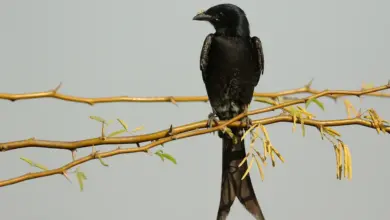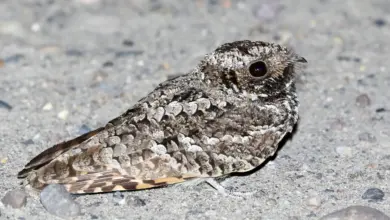Plain-breasted Hawks
The Plain-breasted Hawks (Accipiter ventralis or Accipiter striatus ventralis) is endemic to the coastal mountains of northern Venezuela and Colombia, south through the Andes from western Venezuela, through Colombia, Ecuador, and Peru, to central Bolivia.
One unconfirmed report states that a separated population occurs in the Tepuis of southern Venezuela and is likely to extend into adjacent parts of Roraima in far northern Brazil.
This species appears to be mainly resident, but some local movements are likely to occur depending on the availability of food and nesting sites.
The Plain-breasted Hawks are fairly common within their range and its numbers are currently considered stable.
Description:
Males are 24 to 30 cm (9.5 to 12 in) long, have a wingspan of 52 to 58 cm (20 to 23 in), and weigh from 87 to 114 g (3.1 to 4 oz).
Females tend to be larger at a length of 29 to 37 cm (11.5 to 14.5 in), a wingspan of 58 to 68 cm (23 to 27 in), and a weight of 150 to 218 g (5.3 to 7.7 oz).
Adults have short broad wings and a long square-ended tail banded in blackish and grey (often narrowly tipped white). The remiges (flight feathers – typically only visible in flight) – typically only visible in flight) are whitish barred blackish. Legs yellowish. The hooked bill is black and the cere (soft skin surrounding the nostrils) is yellowish.
The most common morph (genetic mutation) has dark grey upperparts (often appears almost black) and white underparts variable barred, shaded, or mottled with rufous or tawny-buff (extensively marked individuals may appear almost entirely rufous or tawny-buff below). Occasionally, the barring to the lower belly and flanks may appear duskier. The dark morph is the only morph that sometimes lacks rufous thighs; its plumage is entirely sooty (occasionally with slight white barring to the belly and faint grey bands in the tail). The underparts of the females average paler than males of the same morph. The iris is typically yellow, but individuals (mainly sub-adults?) with a darker iris are occasionally seen. Juveniles have dark brownish or dusky upperparts with each feather typically edged rufous, giving a rather scaly appearance. The underparts are white streaked brown, and the thighs are rufous barred white. Occasionally, juveniles with underparts extensively rufous streaked blackish are seen.
The white morph has bluish-grey upperparts (similar to the nominate group), but its underparts are all white except for its rufous thighs.
Habitat / Range:
The Plain-breasted Hawks is found in upper tropical to temperate highlands; mainly at altitudes of 300-3000 m (990-9850 ft), but occasionally down to near sea level and up to 4000 m (13100 ft). It frequents a wide range of woodland and forest types, as long as they are dominated by conifers and various types of broad-leaved trees (particularly oaks).
Food and Hunting:
These birds surprise and capture all their prey from cover or while flying quickly through dense vegetation. They are adept at navigating dense thickets.
The great majority of this hawk’s prey is small birds, especially various songbirds such as sparrows, wood warblers, and American Robins. Birds caught have ranged in size from a 4.4-g Anna’s Hummingbird to a 577-g (1.2-lb) Ruffed Grouse and any bird within this size range is potential prey.
Typically, males will target smaller birds, such as sparrows, and females will pursue larger prey, such as American Robins and flickers. They often pluck the feathers off their prey on a post or other perch.
On occasion, sharp-skinned hawks will also eat rodents, lizards, frogs, snakes, and large insects.
Breeding:
Sharp-shinned Hawks will construct a stick nest in a large conifer or dense group of deciduous trees. Clutches of 3 to 8 eggs have been recorded, but are usually 4 to 5 eggs. The eggs measure 37.6 x 30 mm (1.48 x 1.18 in) and weigh about 19 g. The eggs are prized by egg-collectors because they are heavily marked with surprisingly colorful and varied markings.
The incubation period is thought to average about 30 days. After hatching, the young are brooded for 16 to 23 days by the female, while the male defends the territory and catches food. The young fledge at about a month old and rely on their parents for feeding and protection for another 4 weeks.
The nesting sites and breeding behavior of Sharp-shinned Hawks are generally secretive, to avoid the predation of larger raptors, such as the Goshawk and the Cooper’s Hawk.
While in migration, adults are sometimes preyed on by most of the bird-hunting, larger raptors, especially the Peregrine Falcon. Little is known about the breeding behavior of the Plain-breasted Hawk, but it is assumed to be similar to that of the nominate group.




